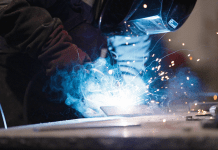Rob Pannell, Managing Director at the Zero Carbon Hub explain how their new Thermal Bridging Guide will lead to improvements in energy efficiency standards and help close the Performance Gap
Research generated by the Zero Carbon Hub and the house building industry has demonstrated the existence of a significant ‘Performance Gap’ between the energy use of new homes as-designed, and the actual use once the building is completed. If constructed homes require more energy than predicted at design, there is a risk to the UK’s energy reduction commitments, consumer confidence in low energy homes and even the possibility of higher than expected household energy bills.
Initially, there was a misconception that this gap was simply caused by inaccuracies in energy modelling software and poor construction practice on site. Hub research has shown however that a gap can be influenced by a number of issues at all stages of the house building process including the inefficient design of thermal bridges within the structure. A number of recurring themes have been identified including:
- Unclear allocation of responsibility;
- Poor communication of information;
- A lack of understanding, knowledge and skills.
To help improve skills and knowledge in low energy construction and provide practical support to industry, the Zero Carbon Hub has put together an informative guide that promotes good design and craftsmanship by highlighting key details related to thermal bridging when building a new home. This new “Thermal Bridging Guide” will help to improve quality of the homes by identifying the most common significant thermal details which, if incorrectly treated, may lead to reduced thermal performance, loss of occupant comfort, and increased energy bills in new build homes.
Intended to be used by architects, building designers, building inspectors and energy assessors, the Thermal Bridging Guide identifies not only issues related to current common practice which may lead to excessive heat loss, but also provides examples of standardised details and ‘improved’ energy efficient details to help industry improve standards as we accelerate delivery to achieve the government’s housing targets. Addressing thermal details from across all aspects of the building stages, including; groundworks, lintels, eaves and party walls for both masonry and timber frame buildings, the Thermal Bridging Guide will also outline each topic with example photographs taken from live development sites and scales showing psi-value improvements.
By creating this guide the Zero Carbon Hub aim to share the knowledge gained during the Performance Gap project across industry to help bring clarity on how construction details can improve the energy efficiency standards of a new home, reduce the design versus as built Performance Gap, highlighting key areas to improve knowledge and skills delivery process.
The Hub will launch the new guide in February 2016. Make sure to check www.zerocarbonhub.org regularly for the latest. ■
. . . . . . . . . . . . . . . . . . . . . . . . . . . . . . . . . . . . . . . . . . . . . . .
Rob Pannell
Managing Director
Zero Carbon Hub
Tel: 0845 888 7620













